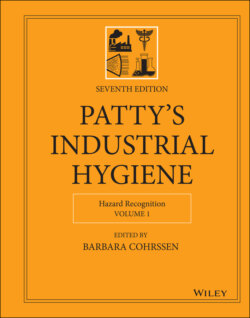Читать книгу Patty's Industrial Hygiene, Hazard Recognition - Группа авторов - Страница 34
4.3 Development of Industrial and Occupational Hygiene Training
ОглавлениеSeveral important developments in occupational and industrial hygiene training have included efforts to expand educational opportunities worldwide, as well as to provide standardized and inexpensive or free training for developing nations and regions.
In the late 1930s, very few universities in the United States offered programs leading to degrees in industrial hygiene at either the undergraduate or graduate level. By the 1940s several countries had established courses in public health which included occupational hygiene, such as the London School of Tropical Health and Hygiene at London University (established in 1924). A similar organization was established in 1930 in Australia at Sydney University with the School of Tropical Health and Medicine, and by 1962 industrial hygiene was part of the curriculum in the public health qualifications. In the 1970s with the introduction of many health and safety legislation around the world – US OSHA Act (1970), UK Health and Safety at Work Act (1974), South Africa Erasmus Commission of Enquiry (1976), Japan Industrial Safety and Health Act No. 57 of 1972 to name a few, there was a need to provide educational programs in industrial hygiene and this saw the universities, colleges, and governments offering courses in occupational hygiene.
In 2000, more than 30 colleges and universities offered programs leading to undergraduate or graduate degrees in industrial hygiene. This reflected the enormous growth in the profession that has taken place over this period. Worldwide in 2018, there were institutions offering Occupational Hygiene courses in Australia, Canada, India, Netherlands, Japan, Malaysia, Korea, South Africa, Singapore, the United Kingdom, and the United States. With the advent of the internet, occupational hygiene courses and course material are now widely available, for example through the Occupational Hygiene Training Association (OHTA) (http://OHLearning.com).
With the goal of supporting students and education in industrial hygiene, the American Industrial Hygiene Foundation was established in 1979 under the auspices of the AIHA. The functions of the Foundation are carried out by an independent Board of Trustees. The Foundation provides fellowships to a limited number of industrial hygiene graduate students, encourages qualified science students to enter the industrial hygiene profession, and stimulates major universities to establish and maintain industrial hygiene graduate programs.
OHTA is a registered UK charity. The organization's object is to protect and promote the health of the public by advancing the study and science of occupational/industrial hygiene for the public benefit through the provision of global training materials and qualifications.
The AIHA has established a closely related content development priority on the topic of the Global Standard of Care for occupational and industrial hygiene. In addition to training, this Global Standard of Care initiative also relates to the development and understanding of the ISO 45001 OH&S management standard (https://www.aiha.org/get-involved/VolunteerGroups/Documents/Content%20Priority%20Dashboards.pdf).
Industrial hygienists should take active roles in educating management concerning environmental stresses in places of work and the means for their control. Alert management can bring pending processes and production changes to the attention of industrial hygienists for study and follow‐up, thus avoiding potential increased risks of inadvertent occurrences of health problems.
